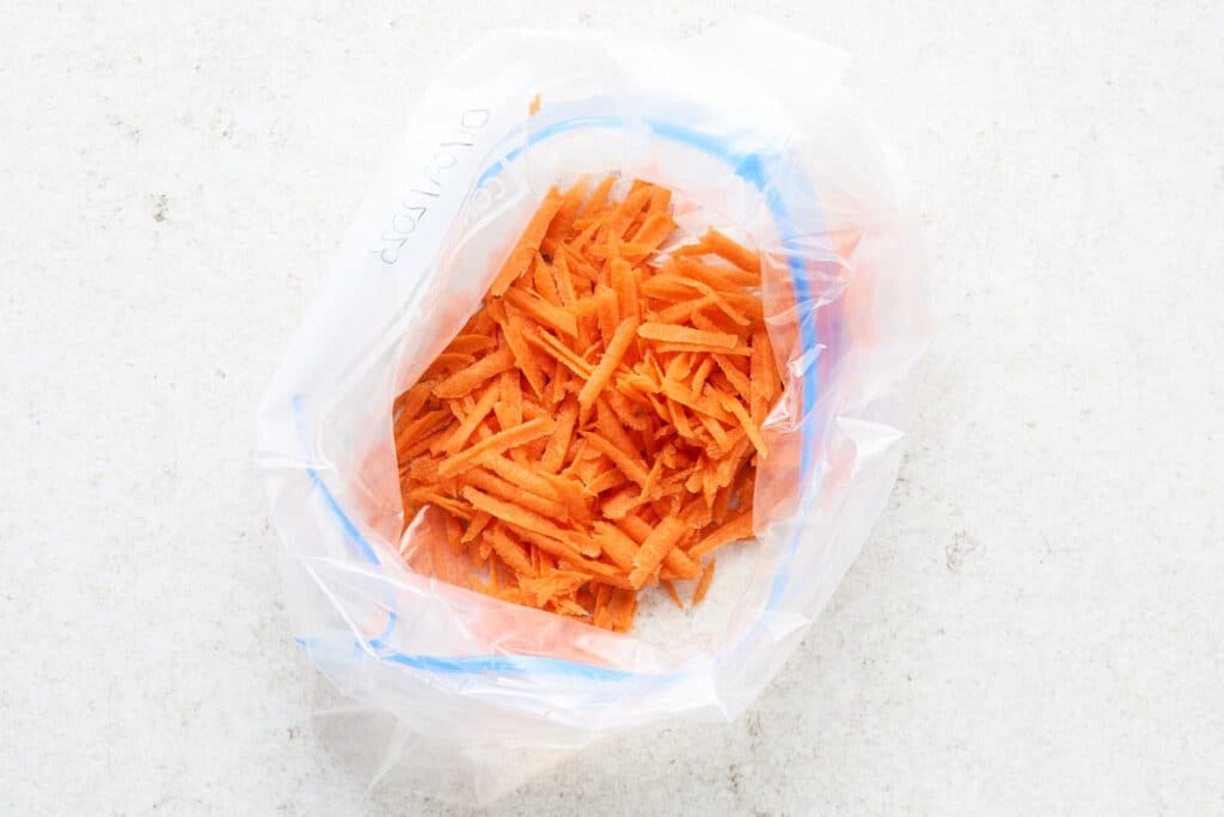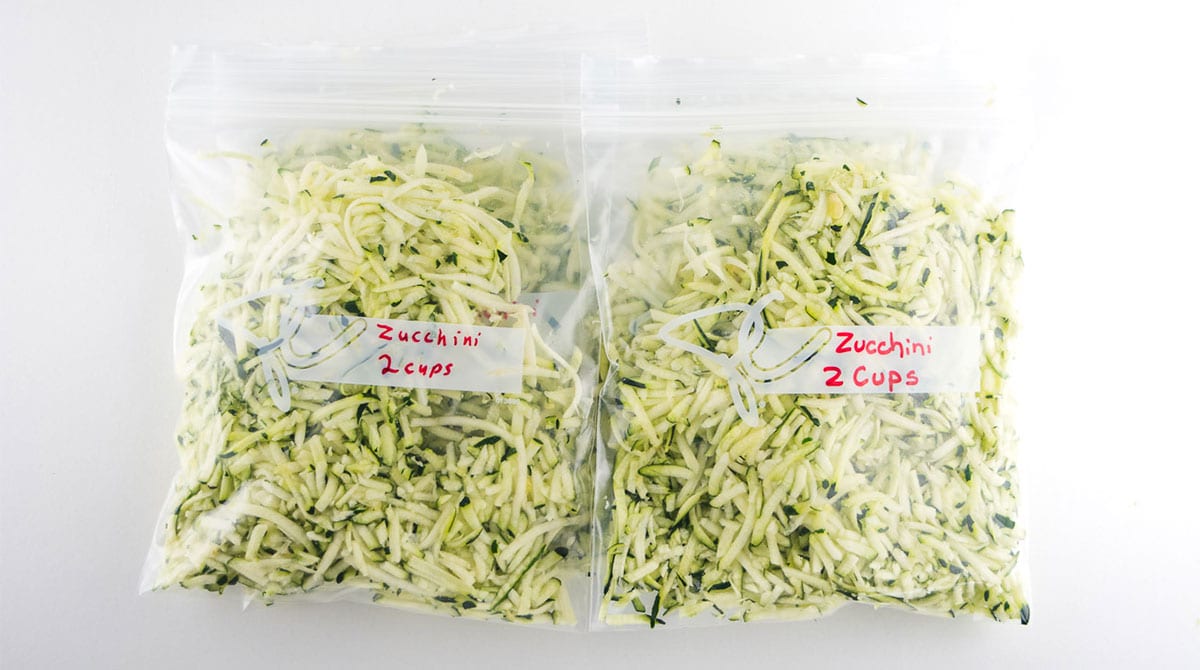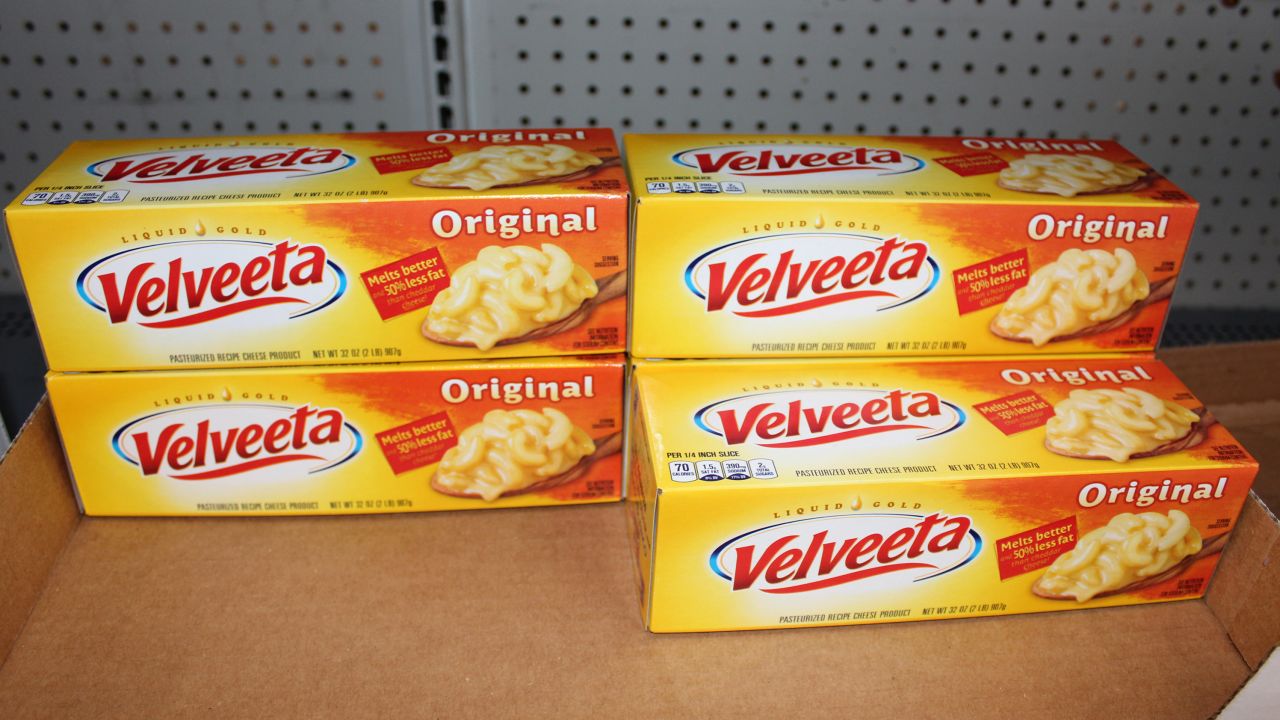

Articles
How To Store Freshly Shredded Cheese
Modified: February 27, 2024
Learn how to store freshly shredded cheese properly to maintain its flavor and texture for longer. Read our informative articles for helpful tips and tricks.
(Many of the links in this article redirect to a specific reviewed product. Your purchase of these products through affiliate links helps to generate commission for Storables.com, at no extra cost. Learn more)
Introduction
There’s nothing quite like the taste of freshly shredded cheese. Whether you’re topping off a delicious homemade pizza or adding a cheesy burst to your favorite pasta dish, using freshly shredded cheese can elevate the flavor to a whole new level. However, once you’ve shredded that block of cheese, you may be wondering how to store it properly to maintain its freshness and taste.
In this article, we will delve into the world of storing freshly shredded cheese. We’ll explore the reasons why it’s important to store it correctly, share the best practices for storing it in the refrigerator and freezer, and provide some valuable tips for maintaining its freshness and flavor.
So, if you’re ready to unlock the secrets of properly storing freshly shredded cheese, let’s dive in!
Key Takeaways:
- Properly storing freshly shredded cheese is crucial for maintaining its flavor, safety, and convenience. Use airtight containers, keep it away from strong odors, and use it within a reasonable timeframe for optimal enjoyment.
- Freezing freshly shredded cheese is an option, but be mindful of texture changes. Consider portioning, labeling, and using within 1-2 months for best results. Remember to maintain freshness with minimal handling and smart storage choices.
Read more: How To Store Freshly Grated Cheese
Why Store Freshly Shredded Cheese?
You might be wondering why it’s necessary to store freshly shredded cheese in the first place. After all, it’s tempting to just leave it on the countertop or toss it in a reusable bag and put it back in the fridge. However, proper storage is essential for maintaining the quality, flavor, and safety of the cheese.
First and foremost, storing freshly shredded cheese helps to prevent bacterial growth and maintain food safety. Cheese, like any other perishable food, is susceptible to bacterial contamination if not handled and stored properly. By storing it in the right conditions, you can reduce the risk of harmful bacteria such as Salmonella or Listeria from proliferating.
Furthermore, freshly shredded cheese is more prone to moisture absorption and oxidation, which can affect its texture and taste. When left exposed to air and humidity, the cheese can become clumpy, develop an off-flavor, and even spoil more quickly. By storing it correctly, you can protect its integrity and enjoy it for a longer period.
Another reason to store freshly shredded cheese is to optimize its convenience and ease of use. When you have pre-shredded cheese readily available, you can effortlessly sprinkle it onto your favorite dishes or incorporate it into recipes without the hassle of grating a block of cheese every time. It saves you valuable time in the kitchen and enhances your cooking experience.
Lastly, storing freshly shredded cheese allows you to take advantage of cost savings. Buying cheese in bulk and shredding it yourself is often more economical than purchasing pre-shredded cheese. By storing it properly, you can maximize the value of your purchase and have a constant supply of shredded cheese at your fingertips.
In summary, storing freshly shredded cheese is essential for food safety, maintaining quality, enhancing convenience, and optimizing cost savings. By taking the time to store it properly, you can ensure that your cheese remains delicious, safe to consume, and easy to use in your culinary creations.
Best Practices for Storing Freshly Shredded Cheese
Now that you understand the importance of storing freshly shredded cheese, let’s explore the best practices to ensure its longevity and freshness.
1. Use airtight containers: When storing freshly shredded cheese, it’s crucial to keep it protected from exposure to air, moisture, and odors. Transfer the cheese to airtight containers or resealable plastic bags to create a barrier against these elements.
2. Label and date: To avoid confusion and prevent the cheese from lingering in the fridge for too long, label the containers with the type of cheese and the date of shredding. This will help you keep track of its freshness and ensure you use it before it surpasses its prime.
3. Store in the coldest part of the fridge: The optimal temperature for storing freshly shredded cheese is between 32°F and 40°F (0°C and 4°C). To maintain the desired temperature, store the cheese in the coldest part of your refrigerator, such as the lower shelves or the fruit and vegetable drawer.
4. Keep away from strong odors: Cheese has a remarkable ability to absorb odors from other foods in the fridge. To avoid any unwanted flavors, store the freshly shredded cheese away from items with strong odors, such as onions, garlic, or seafood.
5. Avoid excessive handling: Every time you open the container or bag of shredded cheese, you introduce air and moisture, which can hasten spoilage. To minimize exposure, only take out the amount you need and promptly seal the rest.
6. Rotate and use within a reasonable time: While freshly shredded cheese can be stored for several weeks, it’s best to use it within a reasonable time frame to ensure optimal taste and quality. Try to rotate your stock, using the oldest shredded cheese first.
7. Don’t freeze it immediately: While freezing cheese is a viable option for long-term storage, it’s generally not recommended for freshly shredded cheese. The texture and moisture content may change, resulting in a less desirable consistency when thawed.
By following these best practices, you can prolong the freshness of your freshly shredded cheese and ensure that it remains delicious and safe to consume. With these tips in mind, let’s move on to specific recommendations for storing freshly shredded cheese in the refrigerator and freezer.
Storing Freshly Shredded Cheese in the Fridge
The refrigerator is the most common and convenient place to store freshly shredded cheese. To ensure its freshness and quality, follow these guidelines:
1. Transfer the shredded cheese to an airtight container or resealable plastic bag. Make sure it is tightly sealed to prevent air exposure.
2. Place the container or bag in the coldest part of your refrigerator, such as the lower shelves or the fruit and vegetable drawer. This helps maintain a consistent temperature and prevents the cheese from getting too warm.
3. Avoid storing the cheese near the back of the refrigerator, where the temperature can fluctuate due to the opening and closing of the fridge door.
4. Keep the cheese away from strong-smelling foods, as it can easily absorb odors. If possible, store it on a separate shelf or section of the fridge.
5. Aim to use the freshly shredded cheese within 1 to 2 weeks for optimal taste and quality. However, if you notice any signs of spoilage, such as mold or an unpleasant odor, discard it immediately.
Remember to always handle the cheese with clean hands or utensils to prevent contamination. By following these steps, you can enjoy the convenience and freshness of your freshly shredded cheese whenever you need it.
Store freshly shredded cheese in an airtight container or resealable plastic bag to prevent it from drying out and absorbing other odors in the fridge. It will stay fresh for longer and maintain its flavor and texture.
Storing Freshly Shredded Cheese in the Freezer
If you find yourself with an abundance of freshly shredded cheese and want to extend its shelf life, freezing is a viable option. Follow these steps to store your shredded cheese in the freezer:
1. Divide the shredded cheese into smaller portions. This allows you to thaw only what you need without having to defrost the entire batch.
2. Place each portion of the shredded cheese into a resealable freezer bag. Squeeze out any excess air before sealing the bag tightly to minimize freezer burn.
3. Label the bags with the type of cheese and the date of freezing. This helps you keep track of the cheese and use it within a reasonable timeframe.
4. Store the bags of shredded cheese in the freezer, laying them flat to maximize space. You can stack them once they are frozen solid.
5. When you’re ready to use the frozen shredded cheese, thaw it in the refrigerator overnight or for a few hours. Avoid thawing it at room temperature, as this can promote bacterial growth.
6. Once thawed, the texture of the shredded cheese may be slightly different from fresh cheese. It may become slightly softer or more crumbly. However, it will still be suitable for melting and cooking purposes.
7. Use the thawed shredded cheese within 1 to 2 months for the best quality and flavor. Over time, frozen cheese can develop freezer burn or deteriorate in taste.
Note: It’s important to mention that freezing cheese can alter its texture, and some varieties may fare better than others. Hard cheeses like cheddar or mozzarella tend to hold up well in the freezer, while softer and more crumbly cheeses may not retain their original texture after thawing.
By following these steps, you can store your freshly shredded cheese in the freezer and have it readily available whenever you need it. Just be mindful of the recommended storage time for optimal taste and quality.
Read more: How To Store Fresh Mozzarella Overnight
Tips for Maintaining Freshness and Flavor
Now that you know how to store freshly shredded cheese in the fridge and freezer, let’s explore some additional tips to help maintain its freshness and flavor:
1. Grate or shred cheese just before you need it: While it’s convenient to shred a large batch of cheese to save time, it’s best to grate or shred the cheese right before using it. This helps preserve its flavor and texture.
2. Avoid excessive handling: Each time you handle the cheese, you introduce air and moisture, which can lead to faster spoilage. Only remove the amount of shredded cheese you need and promptly seal the rest.
3. Use a microplane grater for soft cheeses: Soft cheeses like Parmesan or Romano can be challenging to shred due to their texture. A microplane grater allows you to achieve a fine and fluffy shred, enhancing the flavor and meltability.
4. Add a touch of cornstarch: To prevent freshly shredded cheese from clumping together, toss it with a small amount of cornstarch before storing. This helps absorb excess moisture and keeps the cheese separate.
5. Don’t store shredded cheese near fruits or vegetables: Fruits and vegetables release ethylene gas, which can cause the cheese to spoil more quickly. Keep the shredded cheese away from the produce drawer or any ripening fruits to maintain its freshness.
6. Consider vacuum sealing: If you have a vacuum sealer, use it to remove all the air from the packaging. This can significantly extend the shelf life of the freshly shredded cheese by preventing oxidation and reducing the growth of bacteria.
7. Experiment with different cheese blends: Shredding different types of cheese and blending them together can create delightful flavor combinations. Try mixing mild and sharp varieties or combining different types of cheese for a unique taste.
Remember that the quality and flavor of freshly shredded cheese will gradually diminish over time, even under optimal storage conditions. It’s always best to use it within a reasonable timeframe for the best culinary experience.
By following these tips, you can maintain the freshness and flavor of your freshly shredded cheese, ensuring that it enhances your dishes with its delicious taste.
Conclusion
Properly storing freshly shredded cheese is essential for maintaining its freshness, flavor, and quality. By following the best practices outlined in this article, you can ensure that your shredded cheese stays delicious and safe to consume.
Whether you choose to store it in the fridge or freezer, using airtight containers, keeping it away from strong odors, and maintaining the right temperature will help preserve its integrity. Remember to label and date the containers to track its freshness.
When it comes to freezing freshly shredded cheese, portioning it out, using freezer bags, and labeling each bag will help you easily retrieve the desired amount without compromising its quality. Just be aware that the texture may change after thawing.
To maintain the freshness and flavor of your cheese, consider shredding it just before use and avoiding excessive handling. Adding a touch of cornstarch and keeping it away from fruits and vegetables can also help prevent clumping and spoilage.
Whether you’re a cheese lover or a cooking enthusiast, properly storing your freshly shredded cheese will ensure that you always have a ready supply to enhance your dishes. By following these tips and incorporating them into your routine, you can prolong the life of your shredded cheese and enjoy its mouthwatering taste for longer.
So, the next time you shred that block of cheese, remember to store it correctly to maintain its freshness, flavor, and quality. Happy cooking!
Frequently Asked Questions about How To Store Freshly Shredded Cheese
Was this page helpful?
At Storables.com, we guarantee accurate and reliable information. Our content, validated by Expert Board Contributors, is crafted following stringent Editorial Policies. We're committed to providing you with well-researched, expert-backed insights for all your informational needs.















0 thoughts on “How To Store Freshly Shredded Cheese”